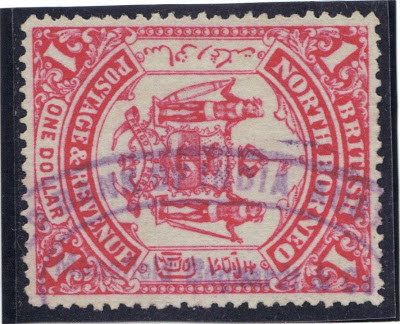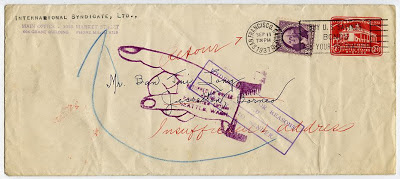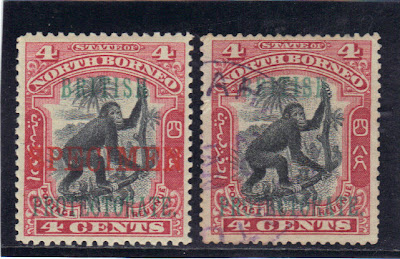I originally posted some interesting cancellations on this issue in October and December 2011. You can see them again on the links here and here.
Both strips of stamps show the star cancel D23 of Kudat which is unusual in having the star towards the bottom of the datestamp. It was used between 1955 and 1963. There is also a more uncommon Kudat cancel with the star located at the top. Somehow, it is not classified in Ted Proud's book. You can see it on the link here.
The Papar D3 in the strip of two should not be uncommon as it was in use for more than 10 years between 1951 and 1963. The star cancel D4 is more sought after. I got it for a couple of ringgit in KK recently. Not a bad bargain. It was used between 1961 and 1963. Actually, the date above of 15 OC 63 is exactly a month past the latest date given in Proud's book.
You can see my nice but weathered Papar D4 cover here.
A relatively uncommon Semporna D2 on this issue with a period of use between 1951 and 1963.
I have no qualms in posting this superb Tamparuli D2 again. It was apparently in use between November 1962 and September 1963. But we have a faint date here of 2 OC 63.
The Jesselton D37 is probably the most attractive of the star cancels. The star here characteristically has a hole in the centre. It was used for over 2 years between 1961 and 1963.
This is the more uncommon Jesselton star cancel D38 which according to Proud was used for about 3 months between June and September 1963. However, the date here of 13 JU 64 does extend the period of use significantly.
A bit of geometry can help in distinguishing between the the 2 different datestamps. As can be seen, a line drawn from the letter "E" through the star falls on different places at the rim, on either side of the letter "B" in Borneo.
This second type of the so called "Australian" cancellations can be quite uncommon. This is Jesselton D39 which was in use for less than a year from November 1962 . It is no wonder that I do not have similar quality cancels for the other towns. This one has a adjustable plug for the time of day which is not usually present in other similar datestamps.
This is not clear but I think it is the "Australian" cancellation for Keningau. It should be fairly uncommon and was used for about 10 months from December 1962.
It is a definite pity that this is a very faint Australian type Mobile P O D2. The dates of usage is given as between late 1962 and September 1963. However, the date here looks like 08OC63.
This Australian type Tawau registration cancel is not listed in Proud's book. The date here is 2MY63.




































































